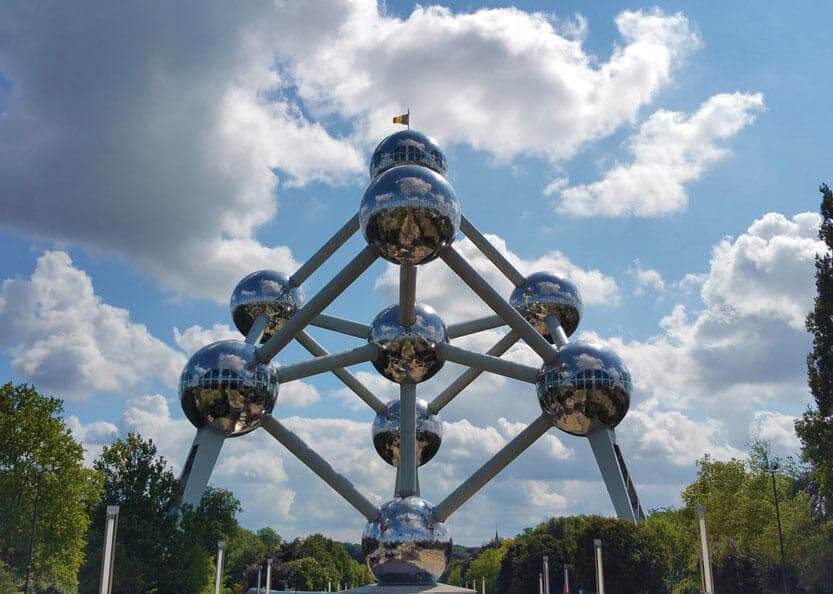Post of the month
Storytelling: a tool for cynics?
In The Tale-Tellers*, Nancy Huston wrote:
“Our brains’ innate predilection for narratives, first skilfully exploited by religions, is now used to advantage by the media, political parties, corporate business and the military.
This is called storytelling. “Facts talk, said a cynic with expertise in storytelling, but stories sell.””
What the ’cynic with expertise’ describes here is manipulation, biased spin-doctoring that relies, amongst other things, on storytelling… But that’s not what storytelling is. It’s a bit like saying that a knife is a weapon for killing. Well, no..: it’s first and foremost a tool, a utensil. That some people use a knife to harm others, doesn’t redefine the object. If one were really determined, one could find ways to do much harm with…marshmallows.
So, what is storytelling? As the word suggests, it’s the art of telling stories. It’s drama. And that’s it. We’re all ‘storytellers’, narrators, but there are rules and methods to create stories that work, that grab the listener. Anyone can use these rules to transform what they say into fluid, instantly grasped communication that the brain accepts with ease…
Storytelling is not this dangerous habit that certain individuals have of dispensing with reality, of lying, of twisting the facts in order to obtain what they want.
Storytelling is the natural language of humans.
(*) The Tale-Tellers: A Short Study of Humankind, Nancy Huston, Mcarthur & Co, 2008.
Performer of the month
Feeling engaged
In this presentation, Sheena Iyengar reveals surprising data about the sociological and cultural factors that influence the act of choosing. But that’s not the only reason that motivated us to suggest you watch this captivating speaker.
It’s also because, exceptionally for a TED talk, Sheena is reading her script. With her eyes half-shut. This is because she’s blind. Yet as she reads, she keeps scanning her audience. Unlike anxious presenters, she doesn’t stare straight ahead at the far wall, like a rabbit caught in headlights. Sheena engages with her audience by acknowledging their presence and their responses to what she says, even if she can’t actually see them.
https://www.ted.com/playlists/301/why_we_do_the_things_we_do
What’s in it for you?
The mechanics of belief
Football. Euro 2016. Like many, we watched it. And like many, we were surprised by the rise to the top of some teams that have been described as ‘minor’, such as Wales or Iceland. Yet we should know by now that beyond individual skill levels, a team’s collective mind can achieve wonders. In other words, these minor teams had ‘belief’.
And what’s wonderful about belief, including self-belief, is that it can negate so-called ‘reality’ and its laws. We get a clean slate. Ideas about what is and isn’t possible are shattered when the strength of your conviction is greater that what opposes it.
At the end of the day, though, what matters is what happens after the unexpected score, or exceptional business result. Those who believe that success is due to the talent you were born with will attribute this feat to a stroke of luck. Those who understand that talent is built on practice will latch onto this proof of ability and make their way to the top, with patience and determination.
To practise
Positive reinforcement
Most of us have been brought up to expect ‘constructive criticism’, the act of highlighting in others what they do wrong, in the hope that it will help them to correct their mistakes, and improve their performance. As an experience, try this for three months: refrain from any negative comments towards colleagues, reports, and associates. Instead, grab every single opportunity of pointing out their good qualities, their hard work and their successes, however minor, in a sincere, non-gushing, matter-of-fact way. Tell them, then note any changes: feedback, morale, atmosphere, results.
Expect to be surprised.
And what else?
Tubs of laurel
Recently, Montreal City Hall was thinking about placing flower tubs along some pavements “to cut down on the amount of concrete”. The mayor’s team were concerned: maintaining these tubs would represent a substantial annual expense. Other expenses would have to be cut: from education, from libraries?
One councillor suggested putting soil-filled tubs on the pavements, with signs saying “Fill me with flowers”, or “I’m yours to garden!”.
The experiment went ahead. The tubs were filled with flowers by the area’s inhabitants. There are no maintenance costs, the library budget is safe and there is less concrete. Even better: a healthy spirit of competition exists amongst ‘gardeners’, and the tubs have become veritable works of art…
The city belongs to us!
Najberg Milne news
Wining Hearts & Minds in Brussels!
On 22 and 23 November, Najberg Milne will run its first open course in Brussels. After London and Paris, we are now establishing a permanent presence in the European capital… Feel free to let your professional and personal contacts know!
For further information: js.pigeau@najbergmilne.com
Link of the month
Breaking up with PowerPoint
As we enter the holiday season, we hope you’ll enjoy this mischievous video…
The tool used here is generally reserved to business contexts. It jars because it creates a distance, when the protagonists should rather try and achieve more closeness.
Question: even though the context is totally different, why do we, in the workplace, accept so easily to burden ourselves with practices that create a distance between us and those we’re talking to?
 Najberg Milne
Najberg Milne


